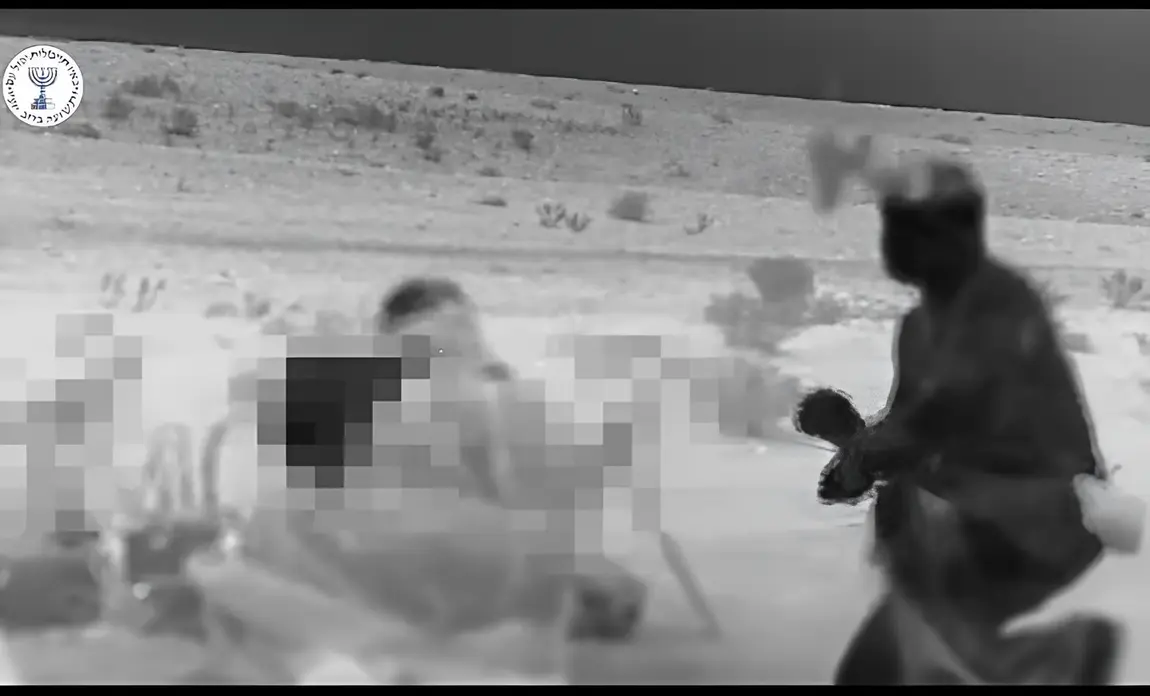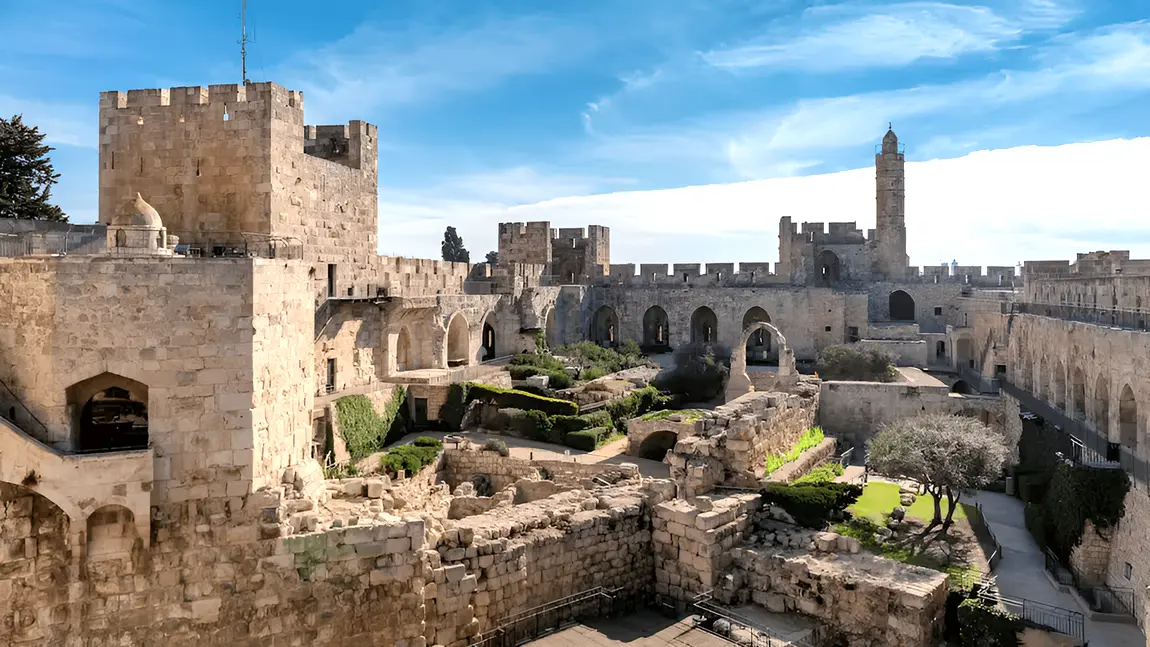Friday Features – August 22, 2025
It’s Day 685 for the 50 hostages still in Hamas captivity. For the first time, Israel has implemented a ‘blackout’ on its negotiating stance, as the IDF moves quickly forward with its plan to conquer Gaza City. Meanwhile, the White House is firmly in the “all or nothing” camp, with President Trump having soured on partial deals.
Visit JewishNewsWire.com 24/7 to catch-up and keep-up. We have posted over 5,000 articles since February.
Beyond these history-shaping headlines, there are many fascinating, in-depth stories you may have missed. Let’s take a look at two.
1. How Israel Secretly Recruited and Trained Iranian Dissidents to Attack Their Country from Within – Extraordinary Details
Source: ProPublica, by Yossi Melman and Dan Raviv
In the early morning hours of June 13, a commando team led by a young Iranian, “S.T.” settled into position on the outskirts of Tehran. The target was an anti-aircraft battery, part of the umbrella of radars and missiles set up to protect the capital and its military installations from aerial attack.
Across the country, teams of Israeli-trained commandos recruited from Iran and neighboring nations were preparing to attack Iranian defenses from within. And so the 12-Day War began.
Usually, these types of “tell-alls” of history-changing operations come out decades after the fact. But in detailed interviews with veteran Israeli spy authors Yossi Melman and Dan Raviv for ProPublica, 10 present and former Israeli intelligence officials describe the commando raids and a wealth of previously undisclosed details of Israel’s decades-long covert effort to prevent Iran from building a nuclear bomb.
It may sound cliché to say it reads like a spy novel or Hollywood movie. But it’s also true. I can’t wait for the movie.

- A fundamental shift in the Mossad’s approach: In the early years of its war against the Tehran regime, the Mossad relied on Israeli field officers. That changed about 15 years ago: Israel recruited, trained and armed a “foreign legion” of some 70 commandos who broke into safes, set up machine guns, blasted air defenses, and watched scientists’ apartments. All were either Iranians or citizens of neighboring countries, entrusted with Israel’s most sophisticated equipment.
- What motivates these agents? It’s a mix of personal and political. Some are seeking revenge against a repressive, clerical regime. Growing unpopularity of the Iranian regime has made it much easier to attract agents. Others have been enticed by cash, the promise of medical care for family members, or opportunities to attend college overseas. “People are driven by emotion – hatred, love, dependence and revenge,” said a Mossad case officer. “But it always helps when the recruit’s motives are supported by some kind of tangible benefit: not necessarily a direct payment but some type of indirect help.”
- Back to “S.T.” Who is he? “S.T.” grew up in a working-class family just outside of Tehran. He was living a seemingly ordinary student life, when he and several classmates were arrested by Iran’s feared Basij militia, and taken to a detention center where they were tortured with electric shocks and brutally beaten.
- Extensive training: A case officer from the Mossad then recruited “S.T.” to work as a covert operative. He was trained for months outside of Iran by Israeli weapons specialists. Just before the attack was to begin, he and his small team slipped back into the country to play their role in one of the biggest and most complex military operations in Israel’s history.
- The art of recruitment: “Convincing someone to betray their country is no small feat,” said a former senior Mossad officer who oversaw units handling foreign agents. “Your agent must be loyal and emotionally tied to you. Like a soldier who charges forward despite the danger, trusting his comrades, so it is with agents. He goes on the mission because he trusts his handler and feels a deep sense of responsibility toward him.”
- Bringing equipment in: Iran is bordered by Iraq, Turkey, Azerbaijan, Armenia, Pakistan, Turkmenistan and Afghanistan. The Mossad has developed contacts with smugglers in all seven nations. “Bringing equipment in and out is relatively easy,” said an Israeli agent. “The Mossad also used front companies that legally shipped boxes and crates by sea and on trucks driven legitimately through border crossings.” The material was delivered to “infrastructure agents,” hidden in safe houses for years, and even updated as technology evolved.
- Interesting tidbit: In the early 2000s, Mossad veterans said that operatives – likely Israelis posing as Europeans installing or servicing equipment – walked around Natanz wearing shoes with double soles that collected dust and soil samples. Testing revealed the Iranian-made centrifuges were enriching uranium well beyond the 5% level needed for a nuclear power plant.
Definitely worth reading the full story. The authors also have an accompanying story on David Barnea, director of the Mossad. Barnea was the subject of Friday Features on the Fourth of July.
2. The Stones Don’t Lie – The Jews are the Indigenous People of the Land of Israel
Source: Washington Free Beacon, by Dean Durns
In his new book, “When the Stones Speak: The Remarkable Discovery of the City of David and What Israel’s Enemies Don’t Want You to Know,” author Doron Spielman brilliantly connects battles over the Jewish people’s past to present efforts to deny the Jewish state’s legitimacy. As he makes clear: The past matters more than ever.
The City of David was established more than 3,000 years ago by King David of the tribe of Judah. David’s descendants ruled for a thousand years, until they were defeated and partially dispersed by Rome in 70 CE. First the Romans, and later the Persians, Muslims, Crusaders and Ottomans would rule over a neighboring hill, which became known as the Old City of Jerusalem.
The walls of the Old City excluded David’s original site. But the dust began to be removed in the 1860s.
The City of David upends a carefully crafted, well-protected, narrative – a narrative that portrays Israel as colonialist and erases the Jewish people’s connection to their ancestral homeland.
In fact, the Jewish presence in the land has been continuous, and it predates the Arab and Islamic conquests by millennia. But acknowledging this would present Zionism – the belief in Jewish self-determination in the Jewish people’s ancestral homeland – as a “liberation movement.” And this runs counter to those who hope to present Israel as an evil, imperialist transplant.
In this spirit, here are a number of other recent archaeological finds:

- Unique 1,900-year-old inscription found in Dead Sea cave – ‘Abba of Naburya Has Perished’: The four-line Aramaic text, one of the few legible inscriptions from the era, may be tied to the Bar Kochba Revolt. The words were spotted only inches away from hidden Roman swords. (Times of Israel)
- Archaeologists unearth rare coin from the time of the Jewish Revolt near Jerusalem’s Temple Mount: The coin, dating from 69-70 CE, was minted by Jewish rebels during the final year of the Great Revolt, bearing the inscription ‘For the Redemption of Zion.’ (Yedioth Ahronoth)
- Rare First Temple-era seal impression found in Jerusalem – tiny 2,600-year-old item found in Temple Mount soil: The minuscule artifact may reference an official who worked for King Josiah, and who appears in II Kings and II Chronicles. (Times of Israel)
- Has the Ark of the Covenant been found? ‘Biblical Relic’ uncovered in Samaria: A topic of much speculation – and false leads. Now, a team working at the ancient biblical site of Shiloh has unearthed a stone structure that appears to match the dimensions and orientation of the Tabernacle described in the Bible. (Daily Mail)
- Bronze was produced in Northern Samaria 3,000 years ago – growth engine of Kingdoms of Israel & Judah: Even in the Early Iron Age, Israel was the “Startup Nation.” And this discovery shows technical knowledge spreading well beyond major urban centers. (Arutz Sheva)
For more about Doron Spielman’s book, please see reviews in Commentary and Spectator.
3. Coming Home Before Their Parents: The Teens Leading a New Wave of Aliyah
Source: Yedioth Ahronoth, by staff
In the shadow of rising global anti-Semitism, and fueled by a deep sense of identity, teenage girls from around the world are moving to Israel alone – years before their families. The Jewish Agency’s Naaleh program is at the heart of this unique movement, transforming the face of modern aliyah.

- Where do they come from? “This year, girls will arrive from around 20 different countries,” says Rabbi Yossi Kahana, lead researcher into the program’s evolution. “We’ve had students from the U.S., Canada, Mexico, Brazil, Venezuela, Germany, Italy, France, and even Singapore and Hong Kong.”
- From “without parents” to “before parents”: This shift isn’t just symbolic. Around 50–60% of the parents eventually follow their daughters to Israel, inspired by their children’s commitment to build their lives here. “It’s a remarkable reversal,” says Kahana. “Instead of parents paving the way, it’s the daughters who are pulling their families toward Israel.”
- Integration isn’t always smooth – but the roots are deep: Economic pressures and cultural gaps pose real challenges, particularly for families who decide to join their children later on. “Some parents struggle with employment or adapting to Israeli society. And yes, some return to their countries of origin,” Kahana acknowledges. “But the overwhelming majority stay – and thrive.”
